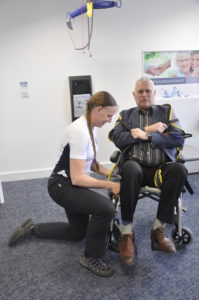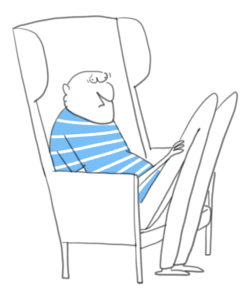In this month’s blog we are going to discuss the influential factors for seating the goals to be achieved through appropriate seating.
The first important stage is to agree the goals with the individual and, where appropriate, their carers.
Remember that there will be several different agendas that will influence the goals. These include:
- Client: comfort, function, communication…..
- Carer/family: does chair look good in the living room…
- Therapist: function, physiological function, stability, skin integrity….
In order to achieve the specific goal, it is likely that some compromise will be necessary. A discussion should take place to answer questions on how best to achieve the seating goal and reach the correct prescription for the individual.
Questions to ask when setting goals: 
- What does the person need to do in the seat you are going to prescribe?
- What physiological functioning needs to be optimised?
- What physical functioning needs to be optimised?
- What social functioning needs to be optimised?
Once all involved parties have answered these questions, the discussion on compromise can take place.
At this stage goal(s) should have been agreed and the assessment can be carried out.
An assessment will look at and consider the individual’s physiological, physical and social functioning and how these will be affected by their seating arrangements.
Physiological functioning encompasses things such as swallowing, breathing and how efficiently the digestive system is working. The individual needs to be able to breathe comfortably and effectively in whatever seat you prescribe for them. If they are likely to eat and or drink whilst in the seat then it is important that they can do so safely. The risk of the food or drink ‘going down the wrong way’ should be minimised as this can be very frightening for both the person and those around them can and can lead to chest infections.
Physical functioning relates to the many activities the individual may perform whilst in the seat. Activities may include reading, writing, watching TV, using a computer, using assistive technology, lifting a cup or utensil to their mouth etc. Whatever the individual is going to do whilst sitting in the seat needs to be identified in the assessment. The seat should offer the relevant amount of support to enable the individual to be as independent in that physical function as possible.
Social functioning is the ability of the individual to engage in the social situation they are in. This usually means they can communicate in the most effective way for them and that others can see their facial expressions. For example, if the individual is a wheelchair user they can access public transport, such as a bus. Alternatively, that they can access their own vehicle. And where practical and safe, they can control the wheelchair to allow them to choose where to be situated in a room, who to sit next to, which room they want to be in.
There are many factors to consider when working with an individual to ensure they are prescribed the appropriate seat. A discussion should happen, and an assessment carried out to ensure the best prescription possible is made for that individual for their needs and requirements.
ABOVE ALL THEY NEED TO BE COMFORTABLE






